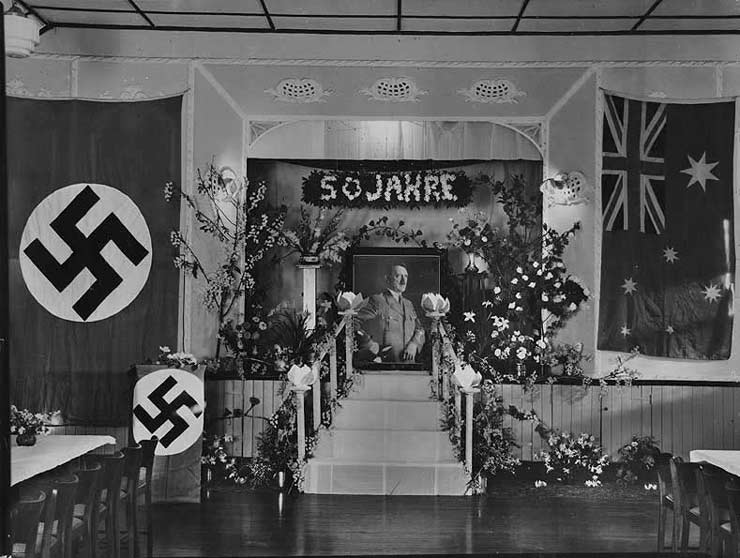 The German Club in Adelaide decorated for Hitler's birthday, 1939
The German Club in Adelaide decorated for Hitler's birthday, 1939
TLF ID R2798
This is a black-and-white photograph that shows the German Club in Adelaide decorated for a celebration of the 50th birthday of the German Fuhrer (leader) Adolf Hitler. The photograph, which was taken on 20 April 1939 just five months before the start of the Second World War, shows a flight of flower-adorned steps leading up to a stage. On the stage, there is a large and heroic photograph of Hitler. On the left of the stage, the flag of Nazi Germany, with its prominent swastika, hangs almost from the ceiling to the floor. Another swastika is draped around a speaker's podium and a smaller Australian flag is on the right of the stage.
